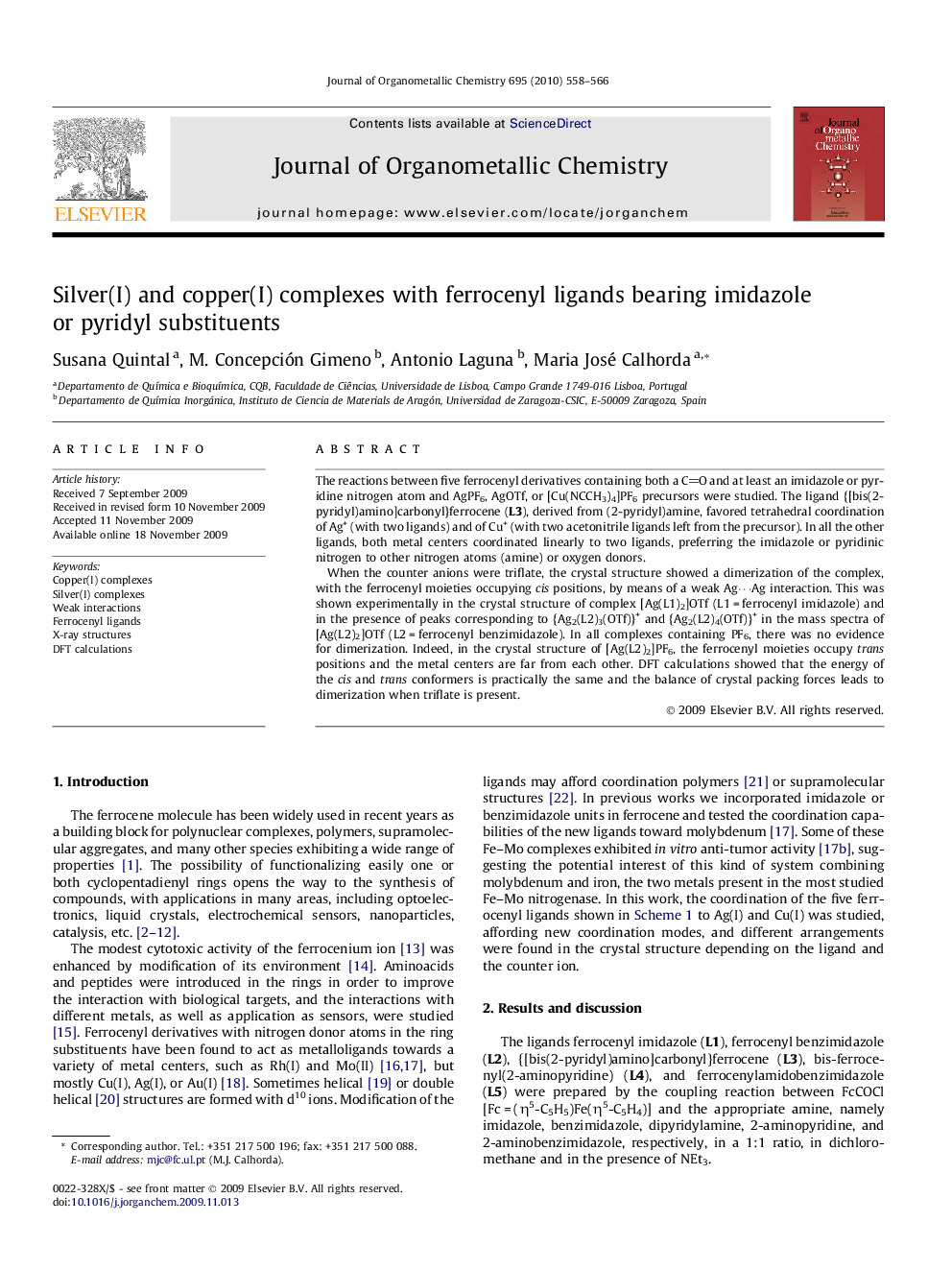| کد مقاله | کد نشریه | سال انتشار | مقاله انگلیسی | نسخه تمام متن |
|---|---|---|---|---|
| 1325971 | 977412 | 2010 | 9 صفحه PDF | دانلود رایگان |

The reactions between five ferrocenyl derivatives containing both a CO and at least an imidazole or pyridine nitrogen atom and AgPF6, AgOTf, or [Cu(NCCH3)4]PF6 precursors were studied. The ligand {[bis(2-pyridyl)amino]carbonyl}ferrocene (L3), derived from (2-pyridyl)amine, favored tetrahedral coordination of Ag+ (with two ligands) and of Cu+ (with two acetonitrile ligands left from the precursor). In all the other ligands, both metal centers coordinated linearly to two ligands, preferring the imidazole or pyridinic nitrogen to other nitrogen atoms (amine) or oxygen donors.When the counter anions were triflate, the crystal structure showed a dimerization of the complex, with the ferrocenyl moieties occupying cis positions, by means of a weak Ag⋯Ag interaction. This was shown experimentally in the crystal structure of complex [Ag(L1)2]OTf (L1 = ferrocenyl imidazole) and in the presence of peaks corresponding to {Ag2(L2)3(OTf)}+ and {Ag2(L2)4(OTf)}+ in the mass spectra of [Ag(L2)2]OTf (L2 = ferrocenyl benzimidazole). In all complexes containing PF6, there was no evidence for dimerization. Indeed, in the crystal structure of [Ag(L2)2]PF6, the ferrocenyl moieties occupy trans positions and the metal centers are far from each other. DFT calculations showed that the energy of the cis and trans conformers is practically the same and the balance of crystal packing forces leads to dimerization when triflate is present.
Ferrocenyl derivatives containing an imidazole or pyridine nitrogen atom react with AgPF6, AgOTf, or [Cu(NCCH3)4]PF6, leading to new polynuclear complexes. The triflate counter ion appears to contribute to the formation of weak Ag⋯Ag interactions in the solid, which are not observed with PF6.Figure optionsDownload as PowerPoint slide
Journal: Journal of Organometallic Chemistry - Volume 695, Issue 4, 15 February 2010, Pages 558–566